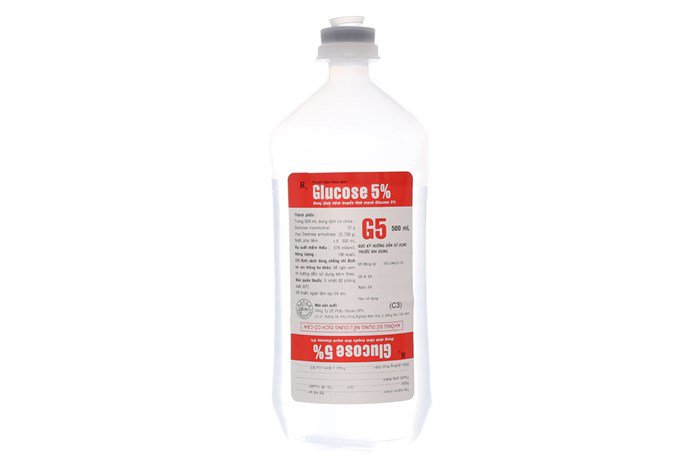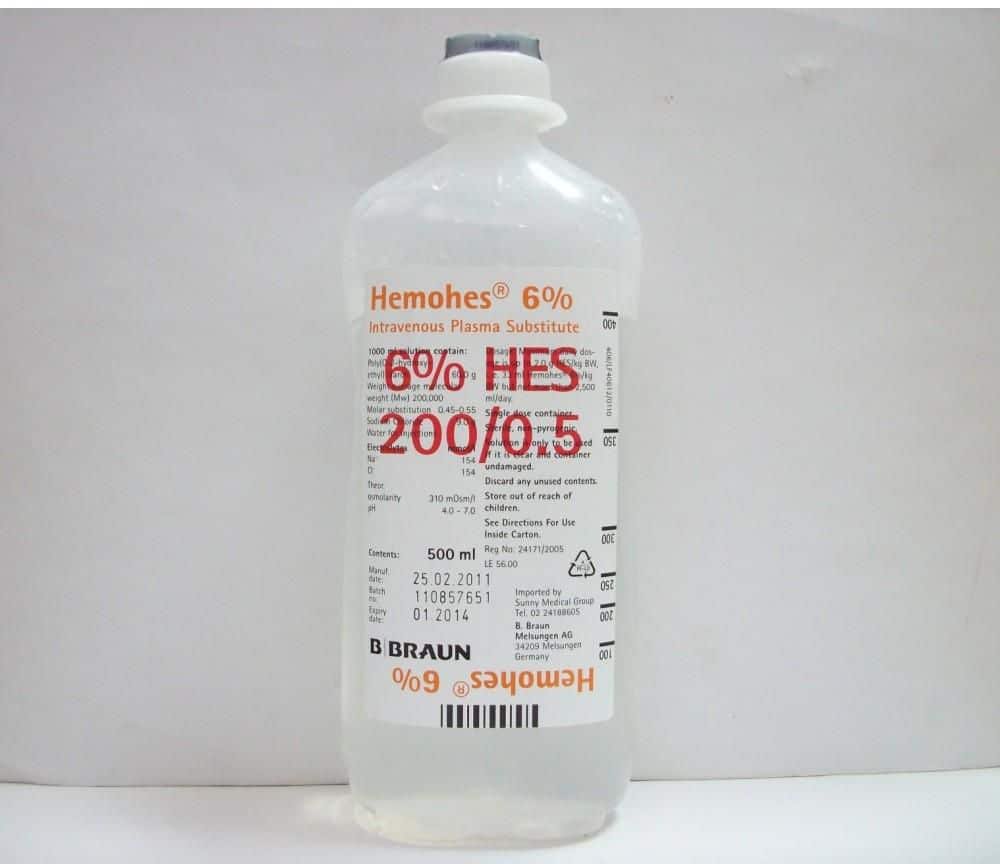Use of intravenous fluids in resuscitation anesthesia
The article is professionally consulted by Specialist Doctor I Tran Thi Ngat - Department of General Surgery - Vinmec Danang International General Hospital.
Infusing the patient with fluids is the first thing that should be done before any surgery. Maintaining intravenous fluids is extremely important, helping to provide emergency care when there are abnormal developments and to compensate for blood loss.
1. Overview of intravenous fluids
The main purpose of using intravenous fluids in the specialty of anesthesiology is to maintain the intravenous line, to ensure the patient's resuscitation during surgery, especially in cases requiring recovery. circulating volume.
Currently, there are two groups of intravenous fluids commonly used in the anesthesiology department: Crystalloids and Colloidal solutions. It is divided into many different sub-categories. The selection of these solutions to use should be based on the following factors:
Biochemical properties; Pharmacokinetics; Pharmacodynamic; Side effects of the solution; Usage circumstances.
Currently, there are two groups of intravenous fluids commonly used in the anesthesiology department: Crystalloids and Colloidal solutions. It is divided into many different sub-categories. The selection of these solutions to use should be based on the following factors:
Biochemical properties; Pharmacokinetics; Pharmacodynamic; Side effects of the solution; Usage circumstances.

Truyền dịch tĩnh mạch trong gây mê hồi sức là việc làm bắt buộc
2. Crystal infusion
2.1. Isotonic crystalloid infusion 0.9% NaCl solution The composition includes 154 mmol Na + and 154 mmol Cl-, osmotic pressure 308 m0sm/l. Sodium is the predominant ion of the extracellular fluid, generating 90% of the osmotic pressure of the cavity. Infusion of Na+ is necessary in cases of hypovolemia. 0.9% NaCl solution when supplied to the blood only retains 25% of the volume in the vessel.
Ringer Lactate solution The composition of the solution includes 130 mmol/l Na+, 4 mmol/l K+, 1 - 3 mmol/l Ca++, 108 mmol/l Cl- and lactate 28 mmol/l, osmotic pressure 278m0smo /l. This solution when infused into the blood retains only 19% of the infusion volume in the blood vessel.
Sweet solution isotonic (glucose 5%) Each 100 ml of solution has 5.5 grams of glucose, metabolized in the body to generate 20 Kcal, osmotic pressure is 278 m0sm/l.
In general, isotonic crystalloid infusion has the following advantages and disadvantages:
Advantages: Can be used in all cases of hypovolemia without affecting coagulation, without risk of allergic reactions. response, easy preparation and low cost; Disadvantages: Poor plasma volume expansion, short intravascular retention time, the replacement volume must be 3-4 times the blood loss volume, easily leading to the risk of interstitial edema, especially brain and pulmonary edema in people severely hypovolemic.
Ringer Lactate solution The composition of the solution includes 130 mmol/l Na+, 4 mmol/l K+, 1 - 3 mmol/l Ca++, 108 mmol/l Cl- and lactate 28 mmol/l, osmotic pressure 278m0smo /l. This solution when infused into the blood retains only 19% of the infusion volume in the blood vessel.
Sweet solution isotonic (glucose 5%) Each 100 ml of solution has 5.5 grams of glucose, metabolized in the body to generate 20 Kcal, osmotic pressure is 278 m0sm/l.
In general, isotonic crystalloid infusion has the following advantages and disadvantages:
Advantages: Can be used in all cases of hypovolemia without affecting coagulation, without risk of allergic reactions. response, easy preparation and low cost; Disadvantages: Poor plasma volume expansion, short intravascular retention time, the replacement volume must be 3-4 times the blood loss volume, easily leading to the risk of interstitial edema, especially brain and pulmonary edema in people severely hypovolemic.

Dung dịch ngọt đẳng trương (glucose 5%) dùng trong truyền tĩnh mạch
2.2. Hypertonic crystalloid infusion Hypertonic NaCl solution Concentration of 3%, 5%, 7.5%, 10% NaCl, the retention time in the vascular compartment is about 1 hour. These solutions draw water from cells near the vascular and interstitial spaces, resulting in a high plasma volume-enhancing effect. Hypertonic NaCl promotes rapid volume recovery, increases plasma volume, and improves left ventricular preload, while reducing afterload.
Hypertonic sweet solution (glucose 10%) Each 100 ml of solution has 11 grams of glucose, metabolized in the body to produce 40 Kcal, and the osmotic pressure is 55 m0sm/l. Note, when there are no special indications, glucose should not be given to subjects at risk of cerebral ischemia.
3. Glue solution
3.1. Natural Colloidal Solution Albumin is a natural colloidal solution of human origin, intended as an intravenous solution. Albumin accounts for about 70% of oncotic pressure and 55% of plasma proteins - an important component of serum, with a molecular weight of 69 kDa.
Albumin solution used has concentrations of 4% (colloidal lower than plasma) and 20% (colloidal hypertonic than plasma). The half-life of albumin is 18 days, corresponding to the time the reticuloendothelial system degenerates. In normal subjects, the potential for an increase in plasma volume ranges from 18 to 20 ml/g.

Truyền dung dịch keo cần theo chỉ định và người bệnh cần được theo dõi trong quá trình truyền
3.2. Synthetic colloidal solutions Solutions belong to this heading and are classified differently according to their biochemical properties. Based on the structure of molecular weight and polydisperse index, which are also classified into categories. These colloids are solvent with an electrolyte solution of 0.9% NaCl or Ringer Lactate.
Dextran Prepared from the culture solvents of Lactobacillus leuconostoc mesenteroides, the average molecular weight of dextran. This substance is eliminated by various routes indicating complex pharmacokinetics. After intravenous infusion, most of the solution is eliminated by the kidneys, some enters the interstitium, or returns to the vascular space via lymphatics, or is metabolized in some organs and produces CO2. The plasma half-life of dextran is related to renal function, specifically D40 is 2 hours and D70 is 24 hours.
Gelatin Gelatin are polypeptides from bovine collagen hydrolyzate. This substance is divided into 2 types: converted solution gelatin (GFM) and urea bridged gelatin (GPU). Molecular weight by weight is about 35 kDa, and by number of molecules with osmolarity it is 23 kDa. These solutions are less dispersed, mildly hypertonic, have a colloidal osmolarity close to that of plasma, unchanged at 4-20oC. Retention time in the vascular compartment after infusion is about 5 hours, approximately 20 - 30% of the dose passes through the intercellular space. Elimination is mainly via the kidney and does not accumulate in tissues.
Hydroxyethylamidone (HEA, HES) Are natural polysaccharides and are derived from corn. Hydroxyethylamidone (HEA, HES) is an isotonic solution with a molecular weight of 200,000 daltons, with the solvent being 0.9% NaCl. The plasma volume increases from 100% to about 140% of the volume infused, which is rapidly eliminated by the kidneys and in the urine. The elimination half-life is about 18-24 hours. In clinical practice, often use HAES - Steril 6% or 10%, each liter contains 60 or 100g Poly (0.2 Hydroxy Ethyl) Starch. The maximum dose should not exceed 2g/kg/day. Each gram of HEA in the vascular compartment holds 30ml of water.

Dung dịch truyền Hydroxyethylamidon (HES)
4. Indications for intravenous fluid use
As a rule, crystalloid solutions are appropriate for mild hypovolemia. In contrast, extensive use of isotonic crystalloids for the purpose of maintaining or increasing plasma volume has the potential to lead to interstitial edema.
Colloidal solutions should be used in combination when there is severe hypovolemia, or when there is a change in vascular permeability. For example, in the case of: infection, brain edema, or extracorporeal circulation.
In general, crystalline solutions (isotonic or hypertonic) and colloidal solutions are preferred. Blood-derived fluids and blood products should be used only when clearly indicated.
The indication for use of different solutions will depend on the pharmacokinetics, pharmacodynamics, and circumstances causing hypovolaemia. In addition, the side effects of each type of fluid are also considered. Some side effects can be mentioned as:
Excess circulating blood volume; Blood dilution; Affects the blood clotting process and the risk of allergies (specific to each type of fluid). To date, no intravenous solution has been considered the most appropriate indication for all cases of hypovolemia. Therefore, depending on the clinical circumstances, causes and actual conditions, the anesthesia resuscitation team will select appropriate solutions.
Vinmec International General Hospital is the address for examination, treatment and prevention of diseases. When performing the examination and treatment process at Vinmec, customers will be welcomed and used modern facilities, machinery and excellent medical services under the guidance and advice. consultation of good doctors, well-trained both at home and abroad.
Customers can directly go to Vinmec Health system nationwide to visit or contact the hotline here for support.
Colloidal solutions should be used in combination when there is severe hypovolemia, or when there is a change in vascular permeability. For example, in the case of: infection, brain edema, or extracorporeal circulation.
In general, crystalline solutions (isotonic or hypertonic) and colloidal solutions are preferred. Blood-derived fluids and blood products should be used only when clearly indicated.
The indication for use of different solutions will depend on the pharmacokinetics, pharmacodynamics, and circumstances causing hypovolaemia. In addition, the side effects of each type of fluid are also considered. Some side effects can be mentioned as:
Excess circulating blood volume; Blood dilution; Affects the blood clotting process and the risk of allergies (specific to each type of fluid). To date, no intravenous solution has been considered the most appropriate indication for all cases of hypovolemia. Therefore, depending on the clinical circumstances, causes and actual conditions, the anesthesia resuscitation team will select appropriate solutions.
Vinmec International General Hospital is the address for examination, treatment and prevention of diseases. When performing the examination and treatment process at Vinmec, customers will be welcomed and used modern facilities, machinery and excellent medical services under the guidance and advice. consultation of good doctors, well-trained both at home and abroad.
Customers can directly go to Vinmec Health system nationwide to visit or contact the hotline here for support.
Bài viết này được viết cho người đọc tại Sài Gòn, Hà Nội, Hồ Chí Minh, Phú Quốc, Nha Trang, Hạ Long, Hải Phòng, Đà Nẵng.





